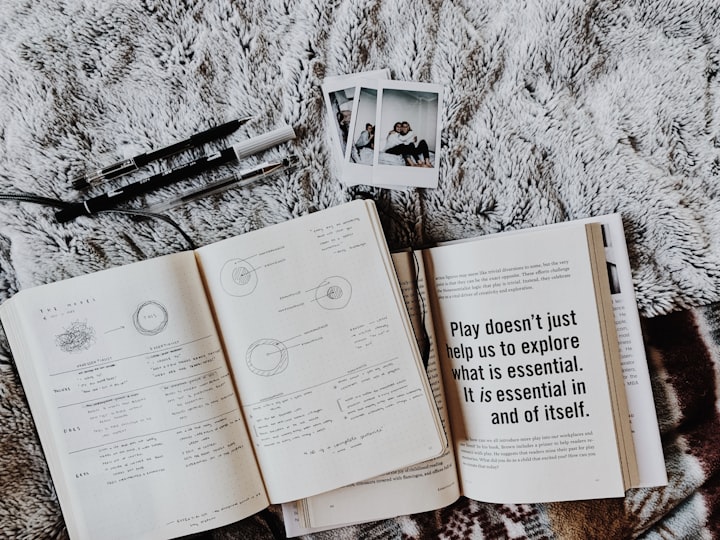The Lazy Girl Guide to Bullet Journalling
Stop doodling in your bullet journal and actually get productive with this guide...

I went through a phase where every YouTube video I watched was a bullet journal flip through. I was in complete awe of the beautiful creations people were making, but had no plans to start my own. Each spread more elaborate and pretty than the last, it seemed like a pursuit for the super artistic.
Also, if I’m entirely honest, I couldn’t see how they were good tools for the job. Sure, they looked pretty, but they seemed to take people hours to create. Hours that could have been spent on actually doing the things in the planner. It seemed more like a hobby than a productivity hack.
However, when the new year came around and I found myself without a traditional planner but with an unlined notebook, I was stuck. Needing somewhere to jot down my appointments, I decided to give bullet journalling a whirl, for a while at least. 3 months later and it’s become my main method of keeping track of all my to-dos. It surprised me, I am actually more productive using this system than my previous method of using a pre-made planner.
So how did I make this work for me, and how can you do the same? Read on…
Hold up, what exactly is bullet journalling?
Bullet journalling is a system for planning and organisation where you, in essence, construct your very own planner. It's "the analog system for the digital age" if the Bullet Journal website is to be believed.
The main chunk of a bullet journal is the daily/weekly spread where you write out the days and dates before listing appointments and to-dos underneath. The benefit of a bullet journal over a regular planner is that you have the freedom to add in any other pages you need. For example, you may have your weekly spread on one page, the next page could be a list of books you've read this year, and when you turn over to the next page you're on the next week's spread. You have total flexibility with this system, because you are creating the planner as you go.
Another key element of a bullet journal is the symbols used to mark list items. A dot is used to indicate a to-do, and this is altered depending on whether the task has been done, postponed, or cancelled. If it's done, draw a cross over the dot. If it's postponed, draw > over it, signifying that you'll do this at a later date. If it's cancelled, simply strikethrough the dot.

So that is the basics of bullet journaling, but, if you've ever fallen down the journalling rabbit hole on YouTube, you'll know that some people's journals are akin to art sketchbook. For them it's as much about the act of creating as it is about the act of planning. But, this is the lazy girl guide, so we're not about any of the artsy stuff. This is not to say there’s no merit to creating beautiful spreads or doing every traditional bullet journal step; it’s just that if you want to bullet journal efficiently, leave the glitter gel pens your pencil case.
Now that we're on the same (bullet journal) page, it's time to...
Skip the Bulleting BS...
There are a lot elements to a traditional bullet journal, but why waste time with anything but the essentials? For example, traditional bullet journal begins with a page of contents, which you can update with a page number and title for every new spread you create. But come on now, how likely are you to use the contents you so meticulously created? You're far more likely to flip through the pages to find the right one. And if there are a few important pages that you want to keep track of, simply use a page marker sticker for easy access.
When I first started experimenting with my bullet journal, I do the silliest things. Like draw little symbols to show if it was supposed to be sunny or cloudy. It's not like that's not useful to know, but realistically, I'll just look on my phone if I want the weather report. I realised this habit was pretty damn pointless. Now I will only put in the weather, plus sunrise and sunset times, if I have a photoshoot scheduled for that day.
Nowadays, I stick to the weekly double page spread. Monday-Wednesday on one page, Thursday-Sunday on the other. I find that this is all I need to keep my to-dos and upcoming events organised. I don't bother with doing a calendar page every month, as I don't have a use for it, but if you'd find this overview useful, do it.
You're creating your own planner, so don't feel pressure to include a page just because you've seen it on Pinterest. Focus on what you need your planner to do.
The Freedom to Plan
The great thing about the bullet journal is the freedom to design it how you want it. Simply create the pages that you need and breeze past everything else. There's no need to do illustrations, add colours, or to make it absolutely perfect.
Just scribble down the structure of the page, and jot down your upcoming tasks. It might be the lazy way, but it's also the more productive way.
Written by Claire Petersen. Find her on Instagram, @byclairep.
About the Creator
Claire Petersen
Berlin-based fashion photographer from Ireland






Comments
There are no comments for this story
Be the first to respond and start the conversation.